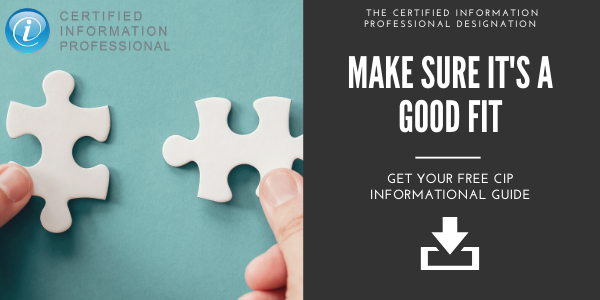How to Dominate the Domains of the NEW CIP - D3: Digitalizing Core Business Processes
Certified Information Professional (CIP)
Welcome back to this continuing series on the updated Certified Information Professional (CIP) exam. In this post, I'll be focusing on Domain 3, Digitalizing Core Business Processes. You can see the posts for Domain 1: Creating and Capturing Information and Domain 2: Extracting Intelligence from Information.
Digitalizing core business processes is much more than scanning paper documents or workflows. It involves rethinking business processes and asking questions about how information comes into, flows through, and leaves business processes. It involves reimagining work at the speed of digital and leveraging new capabilities to satisfy business and customer expectations.
Domain 3: Digitalizing Core Business Processes
- Introduction to Business Process Management: We don't change processes simply because we're bored; instead, process change is usually driven by changes in the business, legal, or technical environment. Whatever the changes are to be introduced, though, it's important to ensure they continue to support business goals and objectives - and it's important to recognize that successful process change is much more dependent on human factors than technology.
- Business Analysis: It's important to understand the current state before making recommendations for change. Gaining and maintaining senior management support will require an understanding of the cost of making changes to a process - and the cost of not making the changes.
- Flowcharts: Flowcharts are simple yet effective tools to help document existing business processes, identify bottlenecks or other process issues, and redesign those processes to be more efficient.
- Troubleshooting and Improving Existing Business Processes: Once we understand the issues with business processes, we can take steps to rework or redesign them for efficiency. This could include introducing or expanding the use of parallel processing or work specialization.
- Selecting the Right Process Automation Solution: Different business processes will benefit from different technical approaches depending on their complexity and other factors. Whichever approach is selected, it's important to measure the efficiency of business processes so that corrective actions can be taken as required.
- Robotic Process Automation: This is a newer entry into the BPM stack, but it is already proving its value to processes that involve a lot of manual data entry between systems. These solutions free up users to perform more valuable, innovative tasks that require creativity.
- Case Management: Case management blends content management and process management capabilities to help manage all content associated with a particular incident, application, or case throughout a business process.
By the end of this domain, you should have a solid understanding of process analysis and process improvement, and how to streamline and automate business processes in support of business goals and objectives. In the next post, I'll review Domain 4, Automating Governance and Compliance.


![[Informational Guide] Is certification right for you? Get this free CIP Exam Guide to find out.](https://no-cache.hubspot.com/cta/default/332414/dcb32a30-373b-4f1b-9d7f-90425213921c.png)
